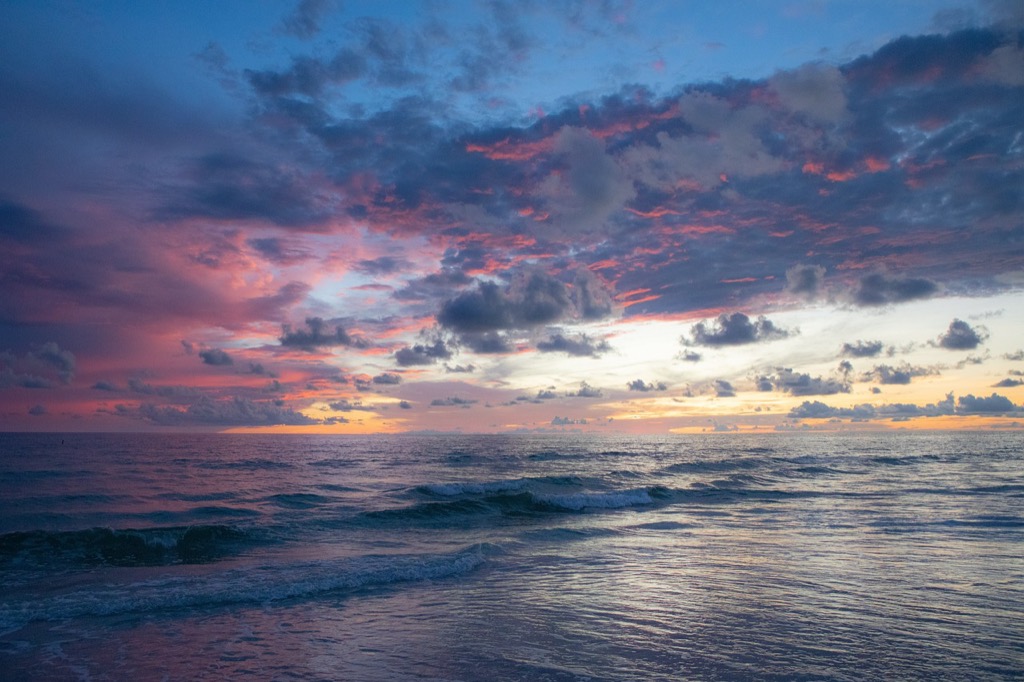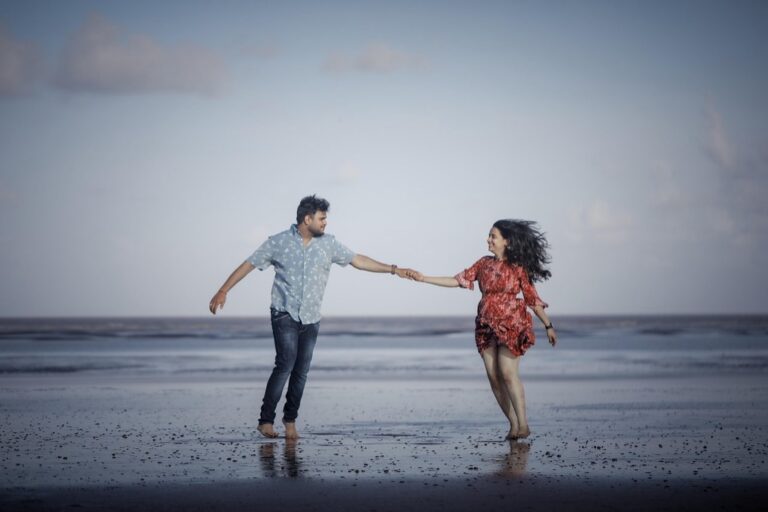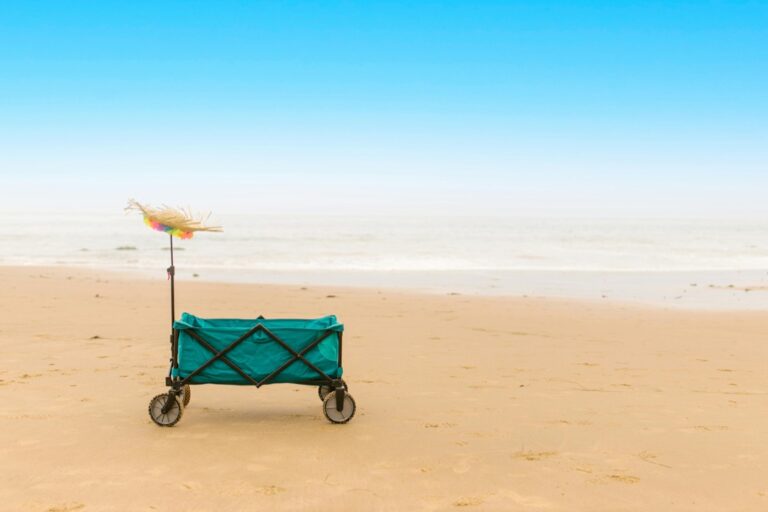7 Enjoyable Beach Activities for Introverts That Create Perfect Solitude
Discover 7 peaceful beach activities perfect for introverts! From sunrise walks to solo reading, these quiet coastal pursuits offer solitude and rejuvenation away from crowds.
Why it matters: You don’t need to be the life of the beach party to enjoy coastal getaways – introverts can find plenty of peaceful activities that recharge rather than drain their energy.
The big picture: Beach destinations offer unique opportunities for quiet reflection and solo adventures that perfectly match introverted personalities.
What’s next: These seven activities will help you maximize your beach time while honoring your need for solitude and meaningful experiences.
Disclosure: As an Amazon Associate, this site earns from qualifying purchases. Thank you!
Early Morning Beach Walking for Peaceful Solitude
There’s something magical about having the entire shoreline to yourself while the world sleeps. Early morning beach walks offer introverts the perfect opportunity to experience coastal beauty without crowds or distractions.
Finding the Perfect Time for Quiet Shoreline Strolls
You’ll find the beach most peaceful between 5:30 and 7:30 AM, depending on your location’s sunrise time. This window gives you at least an hour of solitude before joggers and dog walkers appear. Check local tide schedules since low tide creates wider walking surfaces and reveals tide pools for exploration.
Benefits of Sunrise Beach Walking for Mental Clarity
Walking at sunrise naturally reduces cortisol levels while increasing vitamin D absorption from gentle morning light. The rhythmic sound of waves combined with cool sand beneath your feet triggers your body’s relaxation response. You’ll return feeling mentally refreshed and emotionally centered, ready to tackle your day with renewed focus.
Solo Beach Reading with Ocean Sounds as Your Soundtrack
The rhythmic crash of waves creates nature’s perfect white noise for focused reading. You’ll discover that ocean sounds naturally block distractions while enhancing your ability to lose yourself in a good book.
Choosing the Right Beach Spot for Uninterrupted Reading
Position yourself 20-30 feet from the waterline where wave sounds remain audible but wind interference stays minimal. Look for natural windbreaks like dunes or jetties that provide shelter without blocking your ocean view. Avoid areas near lifeguard stations, volleyball courts, or popular walking paths where foot traffic will constantly interrupt your reading flow.
Creating a Comfortable Reading Setup on the Sand
Invest in a beach chair with a sturdy back and cup holder rather than lying flat on a towel. Pack a small cooler as a side table for your water bottle and phone, keeping essentials within arm’s reach. Consider a beach umbrella or pop-up canopy to eliminate glare and prevent sunburn during extended reading sessions lasting 2-3 hours.
Enjoy comfortable seating anywhere with this low-profile folding chair. Its lightweight design and included carry bag make it easy to transport to camping, beaches, and events.
Mindful Seashell and Beach Glass Collecting
Transform your beach wandering into a meditative treasure hunt that engages your observational skills while providing peaceful solitude. This quiet pursuit lets you explore the shoreline at your own pace without social pressure.
Developing an Eye for Unique Coastal Treasures
Start by walking slowly along the tide line where waves deposit the most interesting finds. Look for unusual colors, smooth textures, and perfect spirals in shells, while seeking frosted sea glass in blues, greens, and rare purples. Train your eye to spot subtle differences in common shells like moon snails, scallops, and whelks that make each specimen special.
Creating a Personal Collection System
Organize your treasures by color, size, or beach location using small containers or shadow boxes at home. Keep a small mesh bag during beach walks to protect delicate finds from breaking against each other. Document special pieces with photos and notes about where you found them, creating a personal journal of your coastal discoveries.
Sunset Photography and Nature Observation
The beach transforms into a photographer’s paradise during golden hour, offering introverts the perfect blend of creative expression and peaceful solitude.
Capturing the Perfect Golden Hour Shots
Position yourself 30-45 minutes before sunset for optimal lighting conditions. The soft, warm light eliminates harsh shadows and creates stunning silhouettes of driftwood, pier structures, and beachgoers. Use your smartphone‘s portrait mode or adjust camera settings to capture the sun’s reflection dancing across wet sand and gentle waves.
Quiet Wildlife Watching Opportunities
Early evening brings active coastal wildlife perfect for observation. Sandpipers dart along the waterline hunting for small crabs, while pelicans glide effortlessly overhead. Bring binoculars to spot dolphins playing in the distance or watch hermit crabs scurrying between tide pools without disturbing their natural behaviors.
See farther and wider with these 12x25 binoculars. Featuring FMC coating and BAK4 prism, they deliver clear, bright images, while adjustable eyecups ensure comfortable viewing for everyone.
Journaling and Creative Writing by the Water
The rhythmic sound of waves creates the perfect natural soundtrack for introspective writing. You’ll find your thoughts flow more freely when paired with the ocean’s gentle rhythm.
Using Ocean Inspiration for Personal Reflection
The ocean’s vastness naturally triggers deeper contemplation about life’s bigger questions. You’ll discover that watching waves crash and recede mirrors your own emotional cycles and personal growth patterns.
Start each writing session by observing the water for 5-10 minutes before putting pen to paper. This simple practice helps your mind settle into a reflective state where authentic thoughts emerge naturally.
Finding Your Ideal Writing Spot Away from Crowds
Position yourself behind the primary dune line or near beach access points that locals use rather than main tourist areas. These spots offer natural windbreaks and significantly fewer interruptions during your creative sessions.
Look for areas with large pieces of driftwood or rock formations that create natural seating and privacy barriers. You’ll want to arrive early morning or late afternoon when families typically aren’t present.
Beach Meditation and Gentle Yoga Practice
The ocean’s natural rhythm creates an ideal environment for mindful movement and meditation. You’ll find that beach meditation transforms your typical practice into something deeper and more grounding.
Simple Breathing Exercises with Ocean Rhythms
Match your breath to the waves for an instant calming effect that connects you with nature’s tempo. Inhale as each wave builds and exhale as it crashes onto the shore.
Try the 4-7-8 technique while listening to the surf: breathe in for 4 counts, hold for 7, and exhale for 8. This pattern naturally slows your heart rate and activates your parasympathetic nervous system.
Beginner-Friendly Beach Yoga Poses
Start with grounding poses like Child’s Pose and Mountain Pose to connect with the sand’s stability beneath you. The beach’s uneven surface actually enhances your balance and core engagement.
Focus on simple standing poses such as Warrior I and Tree Pose, using the horizon as your focal point. The soft sand provides gentle resistance that deepens your practice without overwhelming your muscles.
Quiet Beach Picnicking During Off-Peak Hours
Beach picnicking transforms your coastal solitude into a nourishing experience that feeds both body and soul. Off-peak hours create the perfect backdrop for meaningful meals without the chaos of crowded beaches.
Planning a Peaceful Solo or Small Group Meal
Plan your beach picnic for maximum tranquility by choosing early morning or late afternoon time slots. Pack simple finger foods like sandwiches, fresh fruit, and crackers that won’t attract sand or require complicated preparation.
Bring a cooler with plenty of ice packs to keep perishables safe in the coastal heat. Include extra water bottles since ocean breezes can dehydrate you faster than expected.
Choosing Less Crowded Beach Areas for Dining
Scout beach access points away from main parking areas to find quieter dining spots with natural privacy. Look for sections protected by dunes or rock formations that provide windbreaks for your picnic setup.
Avoid areas near lifeguard stations and popular surf breaks where crowds naturally gather. Local beach access points often offer the most secluded spots for peaceful outdoor dining.
Conclusion
The beach offers endless possibilities for introverts to recharge while connecting with nature’s healing power. These seven activities prove that coastal destinations aren’t just for extroverted socializing—they’re perfect sanctuaries for quiet reflection and personal growth.
Your next beach visit doesn’t have to involve crowded volleyball games or loud beach parties. Instead you can craft meaningful experiences that honor your introverted nature while still embracing everything the coast has to offer.
Whether you’re drawn to early morning solitude or peaceful sunset photography sessions your ideal beach experience is waiting. Pack your journal grab your camera and discover how these coastal retreats can become your favorite spaces for restoration and inner peace.
Frequently Asked Questions
What makes beaches ideal for introverts?
Beaches offer natural solitude, especially during off-peak hours like early morning and late afternoon. The rhythmic sound of waves provides calming white noise, while the vast ocean creates space for quiet reflection and introspection. These environments allow introverts to recharge while engaging in meaningful solo activities.
What time is best for introverts to visit the beach?
Early morning hours between 5:30-7:30 AM are ideal for introverts seeking peaceful solitude. This time offers the most tranquil beach experience with fewer crowds. Late afternoon and sunset hours also provide excellent opportunities for quiet activities and wildlife observation.
How can introverts make beach reading more comfortable?
Position yourself 20-30 feet from the waterline to enjoy ocean sounds while minimizing wind interference. Look for natural windbreaks like dunes or rock formations, and avoid crowded areas. Bring a sturdy beach chair, small cooler, and umbrella for optimal comfort and sun protection.
What meditation techniques work best at the beach?
Match your breathing to the ocean’s rhythm for maximum calming effects. Try the 4-7-8 breathing technique to slow your heart rate naturally. The consistent sound of waves creates perfect white noise for mindfulness practice, helping you achieve deeper states of relaxation.
Where should introverts set up for beach activities?
Choose spots away from main beach entrances and popular areas. Look for locations behind dune lines, near less-traveled access points, or areas protected by natural formations. Position yourself far enough from the water to avoid crowds while still enjoying the ocean’s soothing sounds.
What should introverts pack for a peaceful beach experience?
Bring essentials like a comfortable chair, umbrella for shade, cooler with snacks and water, and entertainment like books or journals. Include sunscreen, binoculars for wildlife watching, and a camera for capturing sunset moments. Keep your setup simple and portable for easy relocation.
How can introverts avoid crowds while beach picnicking?
Plan picnics during off-peak hours like early morning or late afternoon. Choose secluded spots protected by dunes or rock formations away from main beach areas. Pack simple finger foods that are easy to manage and won’t attract unwanted attention from beachgoers.







